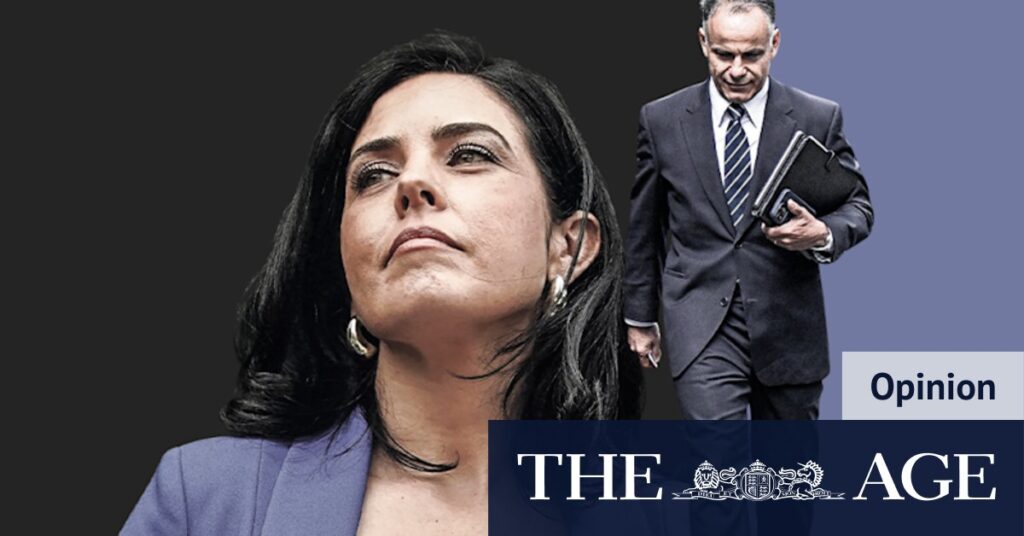
A newsroom sage once advised that to truly understand the Victorian Liberal Party, one must follow its hatreds. While the Labor Party is organized by its factions, the Liberals are bound by a profound loathing of one another. This animosity, rather than ideology or conviction, most reliably dictates party behavior. From historic feuds dating back to Michael Kroger’s days as a student Liberal to today’s grievances that have led the party’s administrative committee to sue itself in the Supreme Court, the narrative remains consistent.
For Opposition Leader Brad Battin, who is nearing the end of his first year in one of the state’s most precarious roles, navigating these internal animosities presents a significant challenge. The recent decisions by Michael O’Brien and David Hodgett to retire before the next election, after serving 20 years in parliament, have opened two vacancies on the opposition frontbench. One of these could potentially be filled by John Pesutto, who has expressed his readiness to return from backbench exile following a leadership debacle.
Pesutto’s Potential Return and Its Implications
John Pesutto, who was previously the shadow attorney-general, has informed Battin of his desire to return to a leadership position. Pesutto’s experience across various portfolios, including education, child protection, and multicultural affairs, makes him a valuable asset. However, promoting Pesutto could ignite tensions with Moira Deeming and her supporters, as their feud continues to reverberate through the party.
The Pesutto-Deeming conflict has extended into the legal realm, with the party’s governing administrative committee embroiled in a Supreme Court case over a $1.55 million loan to Pesutto to settle his legal bills and avoid bankruptcy. Battin, who helped broker this deal, faces the dilemma of balancing party unity with strategic appointments.
“If someone could harness the ill will that courses between Deeming and Pesutto, Victoria would have enough renewable energy to stop burning fossil fuels.”
Strategic Decisions Amidst Internal Turmoil
As the Liberal Party grapples with internal strife, there is a growing push for Battin to use the vacancies created by O’Brien and Hodgett’s retirements to review all shadow portfolios. This presents an opportunity to reshape the team as they head into an election year. Battin’s current lineup, which rewards those who supported his leadership ambitions, has yet to produce a compelling policy narrative.
While Battin is strong on crime and community safety, the party’s economic narrative remains underdeveloped. If the opposition has a credible plan to repair Victoria’s fiscal position, reduce business taxes, and maintain critical services, it has yet to be articulated. A key consideration in any reshuffle is whether Jess Wilson, the party’s most economically literate MP, is in the right role.
Potential Reshuffle Scenarios
Wilson, who previously served as the executive responsible for the Business Council of Australia’s policies, could be a strategic choice for shadow treasurer. However, James Newbury currently holds this position, having played a pivotal role in securing Battin’s leadership. Some within the party propose offering Newbury the shadow attorney-general role, allowing Wilson to step into the treasury portfolio.
Despite these potential reshuffles, the crux of the issue lies in Battin’s focus. As a former policeman, his comfort zone is crime and community safety, which has led to frustration among opposition MPs who see a need for broader policy engagement.
“It is not as easy as saying we have to change the shadow minister. That is not the problem. The problem is the steadfast focus from those at the top who believe crime is the only thing worth talking about.”
The Road Ahead for the Victorian Liberal Party
The Victorian Liberal Party stands at a crossroads, with internal hatreds shaping its path forward. As Battin contemplates strategic appointments and potential reshuffles, the challenge remains to present a united front with a comprehensive policy agenda. The upcoming election year will test the party’s ability to move beyond its internal conflicts and appeal to a broader electorate.
In the end, the party’s future may well depend on its capacity to harness its internal energies constructively, turning animosity into a catalyst for renewal and growth. Whether Battin can navigate these turbulent waters remains to be seen, but the stakes have never been higher for the Victorian Liberal Party.







